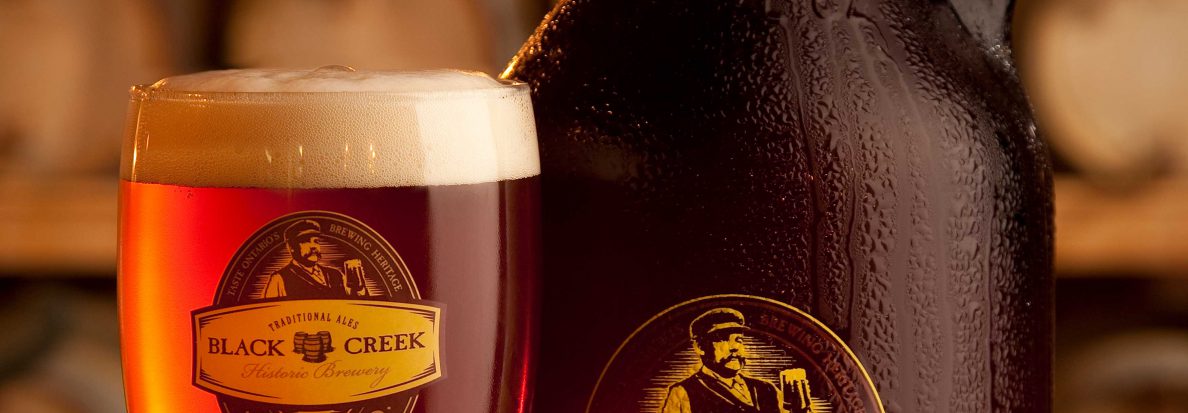When beer leaks from our casks, it’s irritating to clean up and the loss of beer makes us sad, but it’s not a disaster.
The London Beer Flood, on the other hand, was devastating.
Meux’s Brewery had been doing quite well for itself. Sir Henry Meux established it in 1764. He bought out several other brew-houses around London and by the nineteenth century, Meux’s had become a major supplier of porter.
Around the turn of the nineteenth century, it had become common practice to ferment porter in vast vats. While visiting the Meux and Company Brewery on Tottenham Court Road in 1812, novelist Mary Brunton reported vats well over twenty feet high with an 18,000 barrel capacity.

But these barrels were not behind the disaster of October 17, 1814. At about 4:30 pm, an iron hoop, weighing seven hundredweight (just over 700 lbs) slipped from a 22-foot-high cask. Storehouse clerk George Crick was unconcerned; apparently, it happened a few times each year. He dashed off a note to one of the brewery’s partners to inform them of the incident, but at 5:30 that evening, the vat burst.
Porter gushed from the ruptured vat, smashing several hogsheads full of porter (containing about 240 litres each) and knocking the cock from under another vat. Though numbers differ, most contemporary newspaper accounts seem to agree that approximately 3500 barrels of porter were lost. The torrent of beer crashed through the brewery’s back wall and into the streets behind.
The Morning Chronicle gives the victims’ names and ages as follows:
-
Mary Mulvey, a married woman
-
Thomas Murray, (3), son to Mulvey by another man
-
Hannah Banfield, (4)
-
Sarah Bates (or Batea) (3)
-
Ann Saville (60) [note: the Caledonian Mercury, a newspaper in Edinburgh, lists Ann Saville as being only 35]
-
Eleanor Cooper (14), servant to “Mr. Richard Hawes,” at the Tavistock Arms
-
Elizabeth Smith (27) wife of a bricklayer
-
Catherine Butler (65), widow
And here, disaster meets pre-existing social conditions.
The Meux and Company Brewery was located in the slums of St. Giles’. Directly behind the brewery, New Street was a tangle of tenements and working-class dwellings. Porter gushed from the brewery, destroying brick walls and shattering homes.
Since the disaster occurred in the early evening, the working-class men were mostly out, hence the predominantly young and/or female victims. Moreover, the disaster occurred before the government inquiries and social reforms of the 1830s-1840s. Slums like St. Giles’ were generally cramped and overcrowded, with poor drainage and narrow streets. In the case of the London Beer Flood, such conditions likely exacerbated the catastrophe.

As The Examiner reported:
Two houses in New-Street, adjoining the brewhouse, were totally demolished. The inhabitants, who were of the poorer class, were all at home…The site of the place is low and flat, and there being no declivity to carry off the fluid in its fall, it spread and sank into the neighbouring cellars, all of which were inhabited. (The Examiner, Sunday, October 23, 1814).
While poor drainage generally led to unsanitary conditions and the spread of disease amongst the working class, here, it caused the beer to flood homes to an even greater extent. It is also interesting to note that the cellars were inhabited: again, an oblique reference to overcrowding amongst the London poor.
Of the victims listed, Elizabeth Smith and Eleanor Cooper in particular suggest the make-up of St. Giles’ at the time of the Beer Flood. Elizabeth Smith was married to a bricklayer, while Eleanor Cooper was a 14-year-old tavern servant. Judging by their occupations (or the occupations of those around them), it is likely that neither enjoyed particular wealth. Thus, while the flood claimed less than ten lives, the destruction it wrought on the homes surrounding the brewery (two destroyed, more basement apartments flooded) was likely a significant blow to those living there.
Moreover, St. Giles’ boasted a large population of Irish immigrant labourers. The Caledonian Mercury reports that most of the victims were Irish, and that more were injured while attending a wake on nearby George Street. While the condition of the Irish working classes through the nineteenth century is a topic for another time (say, perhaps, a topic for March… wink), it is not surprising to find an enclave of Irish immigrant labourers in London during the early 1800s, nor is it surprising that their living conditions likely worsened the impact of the porter cascading through their streets.
“The London Beer Flood” may conjure an image of freely raining beer and general rejoicing. On closer examination, however, another picture emerges: one of a struggling community, ill-equipped for such an occurrence. It is perhaps worth noting that a judge and jury deemed the London Beer Flood an “Act of God.” Meux and Company, that brewery founded by an English baronet, paid no damages to the predominantly poor, predominantly Irish victims of the flood. After negotiation, they even recovered some of the duty on the lost beer.

In contrast, consider an unnamed seven-year-old: daughter of Mary Mulvey, sister of Thomas Murray, and granddaughter of Catherine Butler. The Examiner reported that she had been taken into care at the St. Giles’ school “…till she can otherwise be provided for. We doubt not but the liberality of the public will soon make provision for her support.”
One certainly hopes so, but wonders…
-Katie
Newspaper Sources
Caledonian Mercury. “Dreadful Accident.” Edinburgh. Saturday, October 22, 1814.
The Examiner. “Accidents, Offences, &c.” London. Sunday, October 23, 1814.
The Morning Chronicle. “Accident at Meux’s Brewhouse.” London. Thursday, October 20, 1814.
See Also:
Cornell, Martyn. “So what REALLY happened on October 17, 1814?” Zythophile. Oct. 17, 2010. Retrieved Feb. 11, 2014.
<;;http://zythophile.wordpress.com/2010/10/17/so-what-really-happened-on-october-17-1814/>;

2 thoughts on “The London Beer Flood”